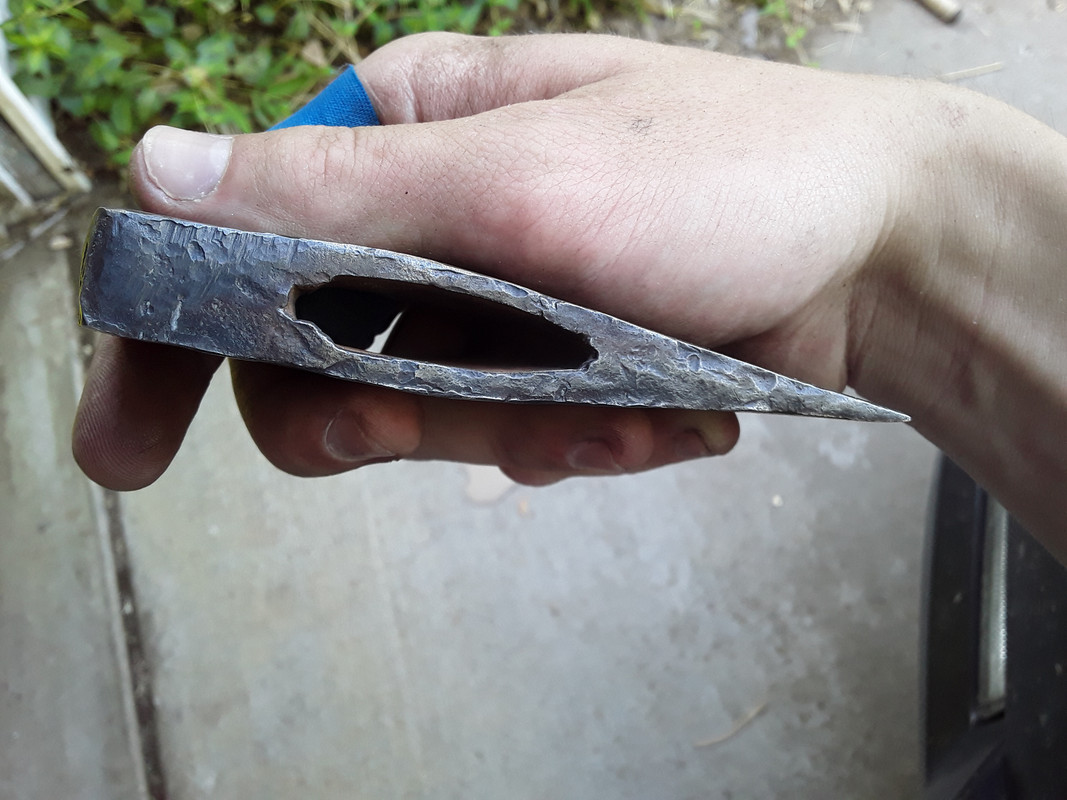AMERICAN AXE HISTORY: SINGLE BIT DESIGNS
Hello there. I really love axes, and America is where most axe innovation took place, so I decided to read up on it.
I looked at many sources and archive footage, and compiled this little article, which I hope you enjoy. There is some theory involved as well, because there is very little, if any, research on the subject of axe geometry.
I've added sources at the bottom.
INTRO
To understand the origin of American axes, we must understand the history of American logging.
American states are essentially countries. Some of them are very large and have diverse geography, climate, etc.
Due to this, it’s difficult to generalize a state or region as harvesting one particular tree species and using one kind of axe. Multiple tree species were felled, and multiple types of axe were manufactured and used everywhere.
There are, however, general tendencies region by region, which we can take a look at. The big tool manufacturers did just this when they "standardized" American axe patterns and made a list of them over 100 years ago.
Some of these patterns, like the Rockaway, are based on very concrete examples, while others like the Wisconsin, Long Island, New England etc. seem far too similar to not be artificial distinctions and essentially one pattern which was forged across a wide region with small differences.
First, using a map from 1884, you can see the division of the North American continent in terms of forest types.
I see two major designs:
The hardwood felling axes of the south and to an extent the Atlantic coast, designed with cutting hardwood in mind. They tend to be big and heavy and have lugs, or ears. The point of these was to increase the contact with the handle and secure the axe head better. I believe these are a somewhat archaic feature, leftover from a time in the early 18th century when axes were not yet as broad and needed the extra contact with the handle.

Latter designs from the middle of the 19th century, such as double bits, axes with forged out phantom bevels, and axes from the period of the logging boom in the great lakes region of the US, were generally earless - they didn't need the ears. Patterns with lugs would still be forged by the big manufacturers, but these are more of an aesthetic element.
The other group I see is the narrower, smaller New England and Great Lake designs, which have no lugs, and were used for cutting primarily softwoods (white pine).

Due to Indiana's oak forests, the Hoosier pattern, probably developed with hardwoods in mind, would fit better in the other group
When I say "wide", I'm talking about the angle of the grind, when I say "broad", I mean the distance from toe to heel.
KENTUCKY PATTERN

Tom from Yesteryears tools mentions this pattern as originating in the late 18th century and describes it as a very heavy felling axe.
I wrote to him with some questions about axe design, then discovered he's been dead for 10 years.
Samuel Collins in a history of his company mentions manufacturing Yankee (light) heads in 1828 and starting production on Kentucky (heavy) heads in 1829. We could probly describe the Kentucky heads as the heavy southern hardwood axe, and the Yankees as the lighter Northern softwood axe.
The state of Kentucky is known primarily for its hardwoods. Oak, hickory, walnut, poplar, etc, which make up more than 70% of its forests.
The Kentucky pattern may have informed some of the lugged and broad patterned designs in the region, such as the Jersey and Baltimore Kentucky.
BROAD FELLING AND HARDWOOD AXES
Large, heavy, rectangular designs with a broad bit are preferred for cutting hardwoods.
Generally, it’s more difficult to penetrate hardwood. I asked Timbersports champion Arden Cogar Jr. about competition axes, and he told me that a long axe will cut deep in softwood, but not so in hardwood, making the broader axe more efficient in that case.

Softwood, due to knots and resin content, will generally stick to itself more, making it more difficult to separate and throw chips. Cutting it requires a long axe which will cut deep and slice its long, continuous fibers.
But going back to broader axes, they will make it easier to overlap your cuts because of how broad the cutting edge is.

A broad axe will also compensate for its relative lack of penetration compared to a narrow axe by cutting across a larger surface area.

The axe, due to its shallower penetration, will not bind as much. It is also easier to apply leverage to pull out an axe which is not sunken deep, due to the "wiggle room".
An axe also needs to clear chips – remove chunks of wood that have already been severed. A wide, broad axe (as long as it can still slice well) will leave less space for the chips and send them flying out.

AUSTRALIAN AXES
Australian axes, due to jarrah, gum and various other terrifying hardwoods (they have this thing called bollock or something) were even more robust, because these woods would break thinner axes. These axes are most reminiscent of the Connecticut pattern, but more massive. They have no phantom bevels, some are even convex - the cheeks jut out a bit. I imagine that when cutting these woods with very hard Janka hardness, you will hardly ever get your axe stuck so deep that you would need the help of phantom bevels to loosen it.

An interesting development in Australian axes is the oftentimes curved bit, which concentrates the force of the swing towards a singe point. This makes it less precise, because it is more difficult to follow a straight line cut after cut, but it also increases the penetration of the axe, which might have been precisely what these big, fat axes needed.
Another, possibly bigger factor, is that the heel and the toe of the axes were generally thinner and supported by less metal, making them more likely to break, so the blacksmiths started grinding or forging them back to counteract this, leading to a curved edge.
You can watch an Australian axe being used in this very beautiful video:
AXES OF THE 18TH CENTURY
The axes of the 18th century are primarily, if you look at pictures of old axes, wedge and half-wedge profiled. Their cheeks are flat.



Another distinguishing feature they have is their very large poll, which was reduced in future generations of axes. My theory is that loggers and blacksmiths gradually found out it was unnecessary, and the metal could be moved to the front, giving the axe a longer life.
Phantom beveled and hollow cheeked axes appeared at a later stage.
Phantom bevels were most likely invented by axe manufacturer William. S. Kelly, who noticed that loggers cutting greenwood were spending as much energy pulling the axe out of the tree as they were in chopping it.

True Temper catalog, 193X
They work by reducing the surface area of the axe, which in turn reduces friction, meaning the axe binds less when cutting.

As modern racing axes have what is called a hollow behind the bevel, the phantom bevels, or “wings” as they call them, are ground out primarily to reduce weight, according to one of the smiths from the Engineered For Axemen forge.

Last edited:


























